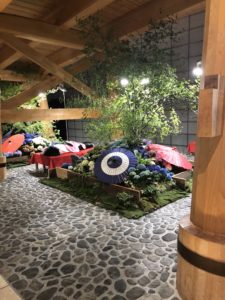I flew out of Hakodate earlier today and it still feels strange, even though I have yet to actually leave Japan. There is already a very apparent shift, in that I have heard more English today from other people than I have in a long while. It will only get more different when I fly into Canada and Japanese becomes almost nonexistent around me.
These past two months have been incredible, and often also felt incredibly long. Now I feel as if I have barely gotten started. It seems like such a cliché, but where has the time gone?
The other day, Mitsuko told me that it was not “さよなら “(“sayonara”) that I should say to them when I leave. She told me that I should say “行って来ます,” which is what I say leaving the house each day. It means I will go and come back eventually. They explained that this would signify that I am going to come back to Japan, and at that time we would see each other again and I would say the greeting I say when I return to the house each day, “ただいま” (“I’m home”).
As I was leaving today, it indeed felt like I was leaving home, and Hakodate and my host family were indeed a second home to me these past two months. I know that when I head back to the US I will surely get homesick for Hakodate and my host family there.
As I left and said my temporary farewells to Mitsuko and Masako, I could not help but feel so lucky and so grateful for being able to come to Japan. While I cannot wait to see my family after a long two months, I really do hope that I will get the chance to say “I’m home” again to Japan. Advancing in Japanese this summer and having all the wonderful memories in Hakodate have only made me more determined to continue my studies in Japanese.
So while this might be goodbye to Japan for now, this is no さよなら. I will go, and I will come back, Japan. Until then.

 were all given passes to the nearby traditional onset for baths for the night. It was a really interesting experience and definitely very different from anything back in the US, but I can say that I would gladly go again because it was also extremely relaxing. In the onset there was also even a restaurant, where we were able to get our first meal in Hakodate outside of the hostel!
were all given passes to the nearby traditional onset for baths for the night. It was a really interesting experience and definitely very different from anything back in the US, but I can say that I would gladly go again because it was also extremely relaxing. In the onset there was also even a restaurant, where we were able to get our first meal in Hakodate outside of the hostel! Along those lines, I tried kendo and kyudo last week! Kyudo was really hard because the arrows just kind of went into the grass. I only hit one target (and it was the wrong one three targets over) but it was awesome to watch the high school kids do it really well. Kendo was super fun because I got to wear a cool outfit (pictured!), yell, and swing a wooden sword around. It was kinda scary at first because we were just hitting the sensei in the head repeatedly, which was mildly worrisome, but after we all adjusted it was pretty great.
Along those lines, I tried kendo and kyudo last week! Kyudo was really hard because the arrows just kind of went into the grass. I only hit one target (and it was the wrong one three targets over) but it was awesome to watch the high school kids do it really well. Kendo was super fun because I got to wear a cool outfit (pictured!), yell, and swing a wooden sword around. It was kinda scary at first because we were just hitting the sensei in the head repeatedly, which was mildly worrisome, but after we all adjusted it was pretty great.